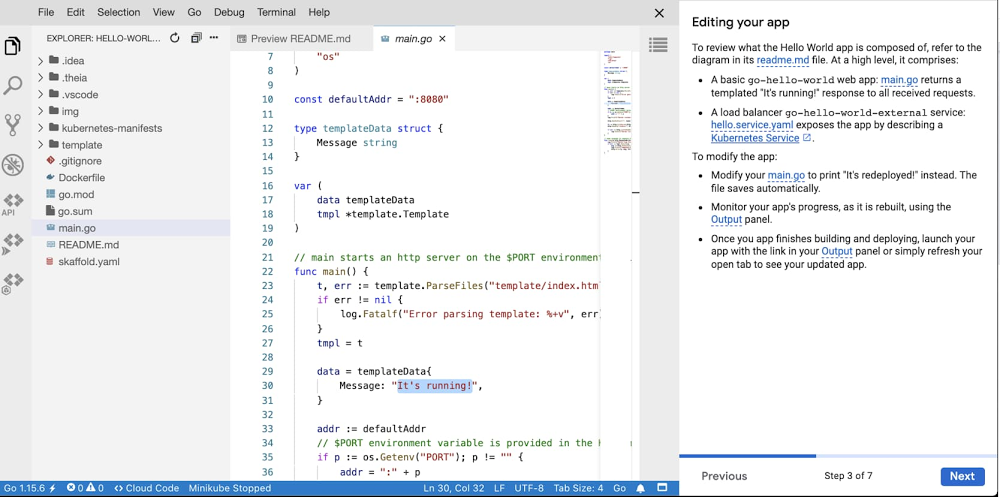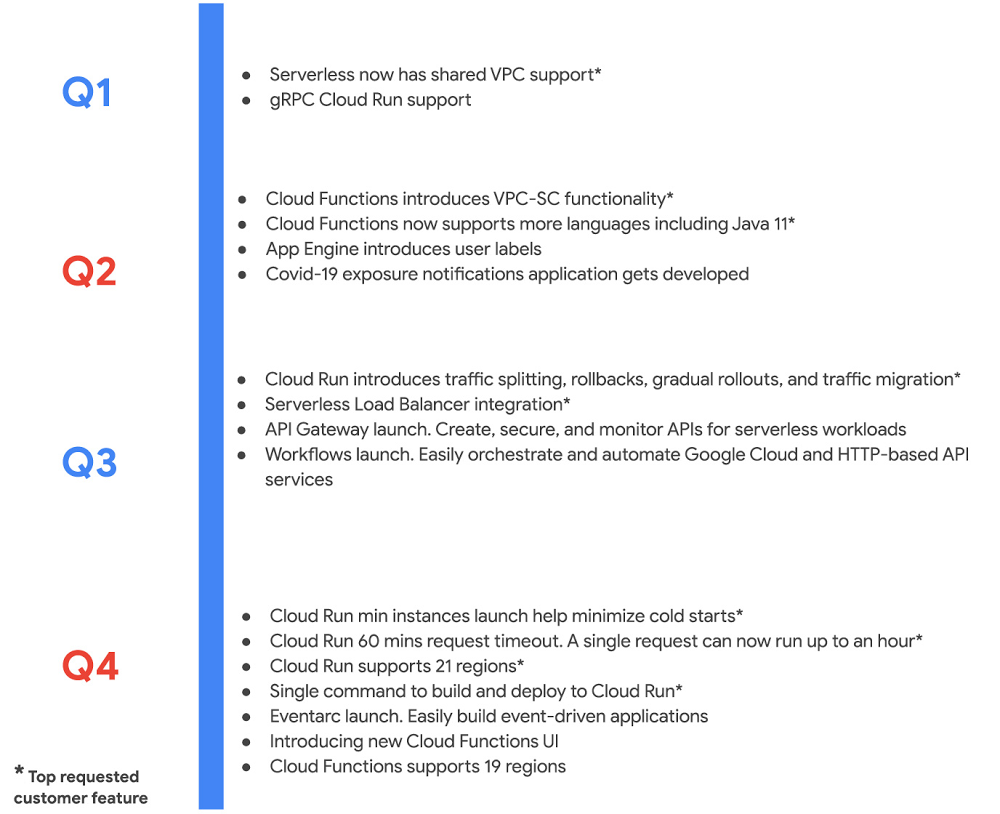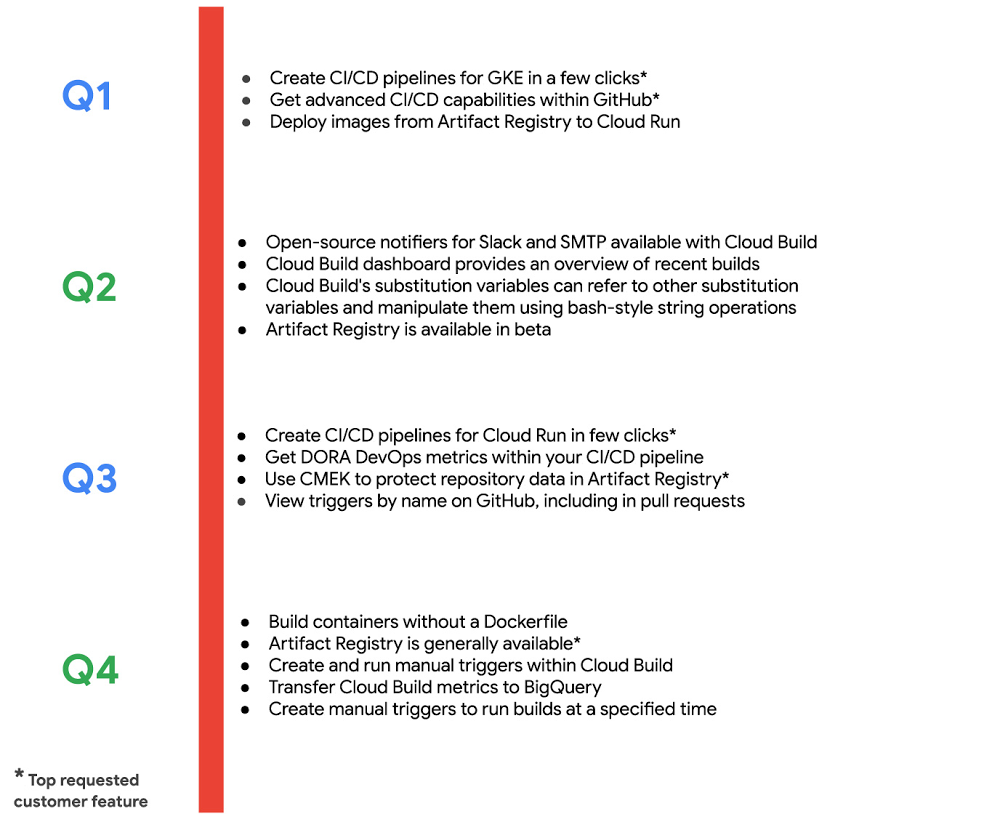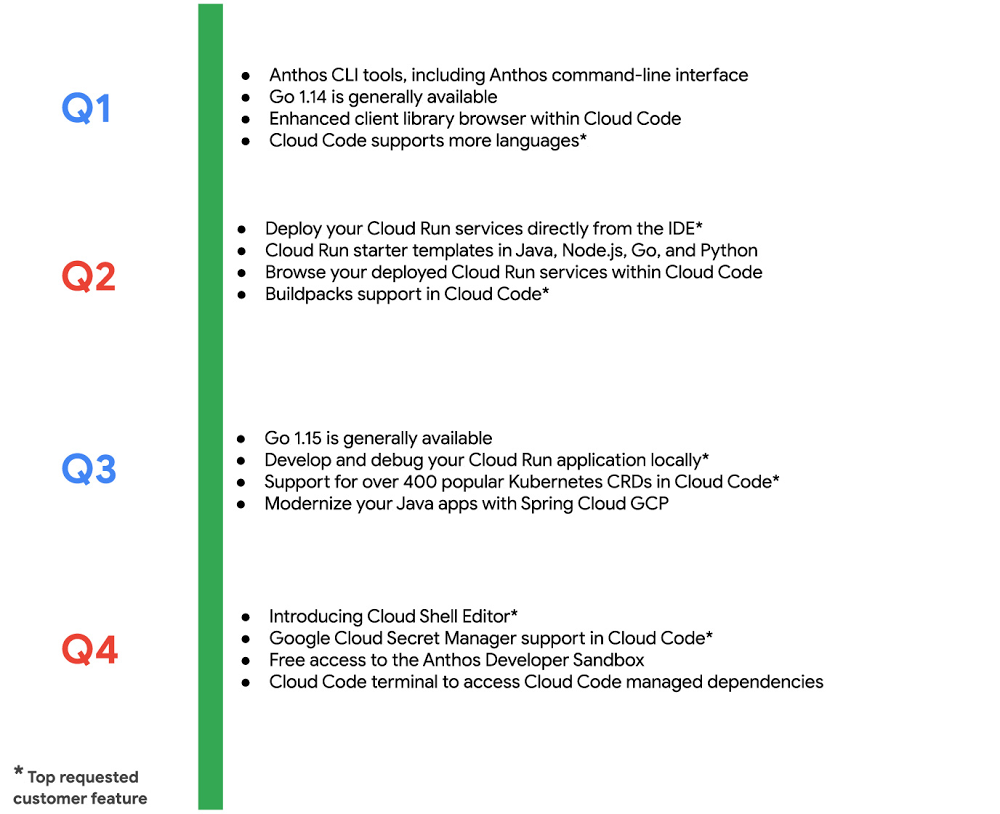GCP – 2020 review: How serverless solutions helped customers thrive in uncertainty
What a year it has been. 2020 challenged even the most adaptive enterprises, upending their best laid plans. Yet, so many Google Cloud customers turned uncertainty into opportunity. They leaned into our serverless solutions to innovate rapidly, in many cases introducing brand new products, and delivering new features to respond to market demands. We were right there with them, introducing over a 100 new capabilities—faster than ever before! I’m grateful for the inspiration our customers provided, and the tremendous energy around our serverless solutions and cloud-native application delivery.
Cloud Run proved indispensable amidst uncertainty
As digital adoption accelerated, developers turned to Cloud Run—it’s the easiest, fastest way to get your code to production securely and reliably. With serverless containers under the hood, Cloud Run is optimized for web apps, mobile backends, and data processing, but can also run most any kind of application you can put in a container. Novice users in our studies built and deployed an app on Cloud Run on their first try in less than five minutes. It’s so fast and easy that anyone can deploy multiple times a day.
It was a big year for Cloud Run. This year we added an end-to-end developer experience that goes from source and IDE to deploy, expanded Cloud Run to a total of 21 regions, and added support for streaming, longer timeouts, larger instances, gradual rollouts, rollbacks and much much more.
These additions were immediately useful to customers. Take MediaMarktSaturn, a large European electronics retailer, which chose Cloud Run to handle a 145% traffic increase across its digital channels. Likewise, using Cloud Run and other managed services, IKEA was able to spin solutions for challenges brought by the pandemic in a matter of days, while saving 10x the operational costs. And unsurprisingly, Cloud Run has emerged as a service of choice for Google developers internally, who used it to spin up a variety of new projects throughout the year.
With Cloud Run, Google Cloud is redefining serverless to mean so much more than functions, reflecting our belief that self-managing infrastructure and an excellent developer experience shouldn’t be limited to a single type of workload. That said, sometimes a function is just the thing you need, and this year we worked hard to add new capabilities to Cloud Functions, our managed function as a service offering. Here is a sampling:
-
Expanded features and regions: Cloud Functions added 17 new capabilities and is available in several new regions, for a total 19 regions.
-
A complete serverless solution: We also launched API Gateway, Workflows and Eventarc. With this suite, developers can now create, secure, and monitor APIs for their serverless workloads, orchestrate and automate Google Cloud and HTTP-based API services, and easily build event-driven applications.
-
Private access: With the integration between VPC Service Controls and Cloud Functions, enterprises can secure serverless services to mitigate threats, including data exfiltration. Enterprise can also take advantage of VPC Connector for Cloud Functions to enable private communication between cloud resources and on-premises hybrid deployments.
-
Enterprise scale: Enterprises working with huge data sets can now leverage gRPC to connect a Cloud Run servicewith other services. And finally, the External HTTP(S) Load Balancing integration with Cloud Run and Cloud Functions lets enterprises run and scale services worldwide behind a single external IP address.
While both Cloud Run and Cloud Functions have seen strong user adoption in 2020, we also continue to see strong growth in App Engine, our oldest serverless product, thanks largely to its integrated developer experience and automatic scaling benefits. In 2020, we added support for new regions, runtimes, and Load Balancing, to App Engine to further build upon developer productivity and scalability benefits.
Built-in security powered continuous innovation
Companies have had to reconfigure and rethink their business to adapt to the new normal during the pandemic. Cloud Build, our serverless continuous integration/continuous delivery (CI/CD) platform, helps by speeding up the build, test, and release cycle. Developers perform deep security scans within the CI/CD pipeline and ensure only trusted container images are deployed to production.
Consider the case of Khan Academy, which raced to meet unexpected demand as students moved to at-home learning. Khan Academy used Cloud Build to experiment rapidly with new features such as tailored schedules, while scaling seamlessly on App Engine. Then there was New York State, whose unemployment systems saw a 1,600% jump in new unemployment claims during the pandemic. The state rolled out a new website built on fully managed serverless services including Cloud Build, Pub/Sub, Datastore, and Cloud Logging to handle this increase.
We added a host of new capabilities to Cloud Build in 2020 across the following areas to make these customer successes possible:
-
Enterprise readiness: Artifact Registry brings together many of the features requested by our enterprise customers, including support for granular IAM, regional repositories, CMEK , VPC-SC, along with the ability to manage Maven, npm packages and containers.
-
Ease of use: With just a few clicks, you can create CI/CD pipelines that implement out-of-the-box best practices for Cloud Run and GKE. We also added support for buildpacks to Cloud Build to help you easily create and deploy secure, production-ready container images to Cloud Run or GKE.
-
Make informed decisions: With the new Four Keys project, you can capture key DevOps Research & Assessment (DORA) metrics to get a comprehensive view of your software development and delivery process. Additionally, the new Cloud Build dashboard provides deep insights into how to optimize your CI/CD process.
-
Interoperability across CI/CD vendors: Tekton, founded by Google in 2018 and donated to the Continuous Delivery Foundation (CDF) in 2019, is becoming the de facto standard for CI/CD across vendors, languages, and deployment environments, with contributions from over 90 companies. In 2020, we added support for new features like triggers to Tekton.
GitHub integration: We brought advanced serverless CI/CD capabilities to GitHub, where millions of you collaborate on a day-to-day basis. With the new Cloud Build GitHub app, you can configure and trigger builds based on specific pull request, branch, and tag events.
Continuous innovation succeeds when your toolchain provides security by default, i.e., when security is built into your process. For New York State, Khan Academy and numerous others, a secure software supply chain is an essential part of delivering software securely to customers.
Onboarding developers seamlessly to cloud
We know cloud development can be daunting, with all its services, heaps of documentation and a continuous flow of new technologies. To help, we invested in making it easier to onboard to cloud and maximizing developer productivity:
- Cloud Shell Editor with in-context tutorials: My personal favorite go-to tool for learning and using Google Cloud is our Cloud Shell Editor. Available on ide.cloud.google.com, Cloud Shell Editor is a fully functional development tool that requires no local setup, and is available directly from the browser. We recently enhanced Cloud Shell Editor with in-context tutorials, built-in auth support for Google Cloud APIs, and extensive developer tooling. Do give it a try, we hope you like it as much as we do!

-
Speed up cloud-native development: To improve the process of building serverless applications, we integrated Cloud Run and Cloud Code. And to speed up Kuberentes development via Cloud Code, we added support for buildpacks. We also added built-in support for 400 popular Kubernetes CRDs out of the box, along with new features such as inline documentation, completions, and schema validation to make it easy for developers to write YAML.
-
Leverage the best of Google Cloud: Cloud Code now lets you easily integrate numerous APIs, including AI/ML, compute, databases, identity and access management as you build out your app. Additionally, with new Secret Manager integration, you can manage sensitive data like API keys, passwords, and certificates, right from your IDE.
Modernize legacy applications: With Spring Cloud GCP we made it easy for you to modernize legacy Java applications with little-to-no code changes. Additionally, we announced free accessto the Anthos Developer Sandbox, which allows anyone with a Google account to develop applications on Anthos at no cost.
Onwards to 2021
In short, it’s been a busy year, and like everyone else, we’re looking out to 2021, when everyone can benefit from the accelerated digital transformation that companies undertook this year. We hope to be a part of your journey in 2021, helping developers build applications quickly and securely that allow your business to adapt to market changes and improve your customers’ experience. Stay safe, have a happy holiday, and we look forward to working with you to build the next generation of amazing applications!
Read More for the details.





